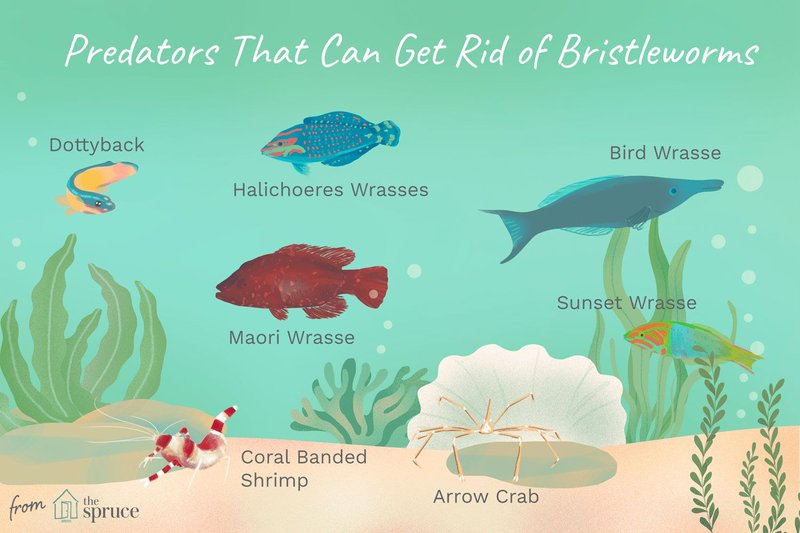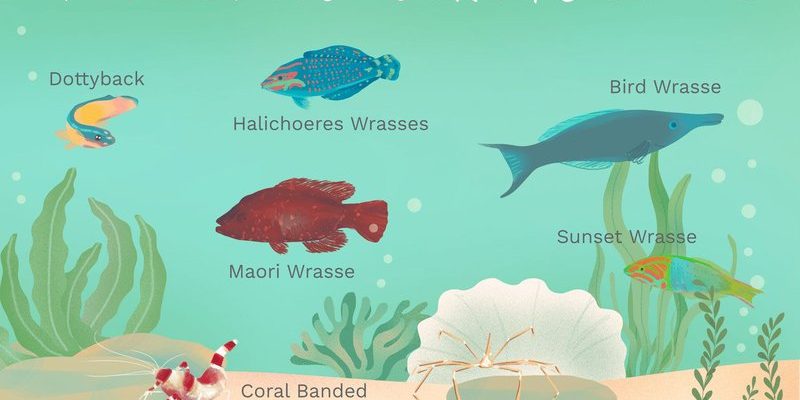
Bristle worms, scientifically known as polychaetes, belong to a large group of segmented worms. They often show up in saltwater tanks, usually as hitchhikers on live rock or corals. While they’re generally harmless, their presence can spark a debate among aquarium enthusiasts. Let’s dive into the nitty-gritty of their benefits and drawbacks—and help you decide if they deserve a spot in your aquatic setting.
The Good: Benefits of Keeping Bristle Worms
1. Natural Clean-Up Crew
One of the best things about bristle worms is their role as a natural clean-up crew. They scavenge the tank, munching on leftover food and decaying matter. This helps keep your aquarium cleaner, reducing the chances of harmful ammonia spikes. Think of them as the little vacuum cleaners of the underwater world.
However, you should still keep an eye on how much food you provide. Overfeeding can lead to a population explosion of bristle worms. Instead of a helpful crew, you might end up with a swarm, making your tank look overcrowded and unkempt.
2. Beneficial for Your Tank’s Ecosystem
Bristle worms also contribute to the overall health of your aquarium. As they dig into the substrate, they aerate the sand or gravel, promoting better water circulation. This process ensures that beneficial microorganisms thrive and helps break down waste more effectively. Imagine them as tiny gardeners, constantly turning the soil and ensuring everything grows well.
This aeration is particularly beneficial in a reef tank, where a stable environment is crucial. Bristle worms support your tank’s delicate balance, which is especially important if you’re housing sensitive coral species.
3. Food Source for Marine Life
If you have predators like wrasses or dottybacks, bristle worms can serve as a food source. Many fish will snack on these worms, providing an extra treat that mimics their natural diet. It’s like hosting a dinner party where everyone gets a little something special.
Just remember, having too many bristle worms can lead to problems, especially if they start to outnumber other food sources in your tank. Balance is key, so keep an eye on their population.
4. Indication of Tank Health
Surprised to learn that bristle worms can actually be a sign of a healthy tank? That’s right! Their presence often indicates good water quality and sufficient food sources. If you see a few bristle worms creeping around, it can mean your tank is thriving.
However, too many bristle worms could signal an imbalance, like excessive waste or uneaten food. So, while they might be great to have around, it’s essential to monitor their numbers to ensure they don’t disrupt the harmony of your aquarium.
The Bad: Drawbacks of Keeping Bristle Worms
1. Potential Overpopulation
One of the biggest drawbacks of bristle worms is their potential for overpopulation. When conditions are just right—like when food is abundant—their numbers can multiply rapidly. You might find them crawling out of the substrate or even climbing on your corals, which can be alarming.
Having too many bristle worms can lead to competition for food with other organisms. If they start to dominate your tank, you might find your other pets and critters struggling to get their share.
2. Nuisance for Aquarists
Bristle worms might also become a nuisance. While they’re not harmful to your fish, seeing them scuttle around can be unsettling, especially if you’re keen on a pristine look for your aquarium. They can hide in crevices and pop out unexpectedly, which is exactly the kind of surprise you don’t want when you’re checking out your fish.
If your goal is to maintain a specific aesthetic or to care for delicate species, having visible bristle worms can be frustrating. You might find yourself constantly trying to manage their population or remove them altogether.
3. Stinging Bristles
Here’s a fun fact: bristle worms have tiny bristles that can cause irritation if handled. The bristles are sharp and can sting if you touch them, leading to discomfort. It’s like touching a cactus—unpleasant and avoidable!
So if you’re planning to reach into your tank to remove them, wear gloves! It’s better to take precautions than to discover their prickly side the hard way.
4. Competing with Beneficial Organisms
Finally, bristle worms can compete with other helpful creatures in your aquarium. If you have detritivores (like snails and certain shrimp) that play a crucial role in breaking down waste, bristle worms might outcompete them for food. This competition can lead to a less efficient clean-up crew overall.
If you’re striving for a balanced ecosystem, you might want to consider how bristle worms fit into that picture. Keeping a mix of beneficial organisms can often provide better overall results.
Making a Decision: Should You Keep Bristle Worms?
At this point, you might be wondering whether bristle worms are right for your aquarium. The answer depends on your specific goals and conditions. If you want a more natural ecosystem and can maintain balance, they can be a great addition.
On the other hand, if you prefer a meticulously curated aquarium with less visibility of these creatures, you might want to limit their presence or find ways to control their numbers.
How to Manage Bristle Worms
If you go ahead and introduce bristle worms, here are some tips to keep their population in check:
- Monitor Food Supply: Avoid overfeeding your fish and other inhabitants.
- Regular Maintenance: Perform routine tank cleanings to remove decaying matter.
- Introduce Competitors: Consider adding species that can outcompete bristle worms for food.
- Manual Removal: If their numbers grow too large, you might need to manually remove them using gloves.
These steps can help you maintain a healthy balance in your aquarium while still enjoying the benefits of keeping bristle worms.
Keeping bristle worms can be a bit of a double-edged sword. They play useful roles in your aquarium, from cleaning up detritus to enhancing the ecosystem’s health. However, they can also cause complications if their numbers grow out of control.
Ultimately, it’s about finding the right balance for your aquatic environment. Just like in life, the key is to embrace the good while keeping an eye on the challenges. With a little bit of care and management, bristle worms can become a valuable part of your underwater adventure!

